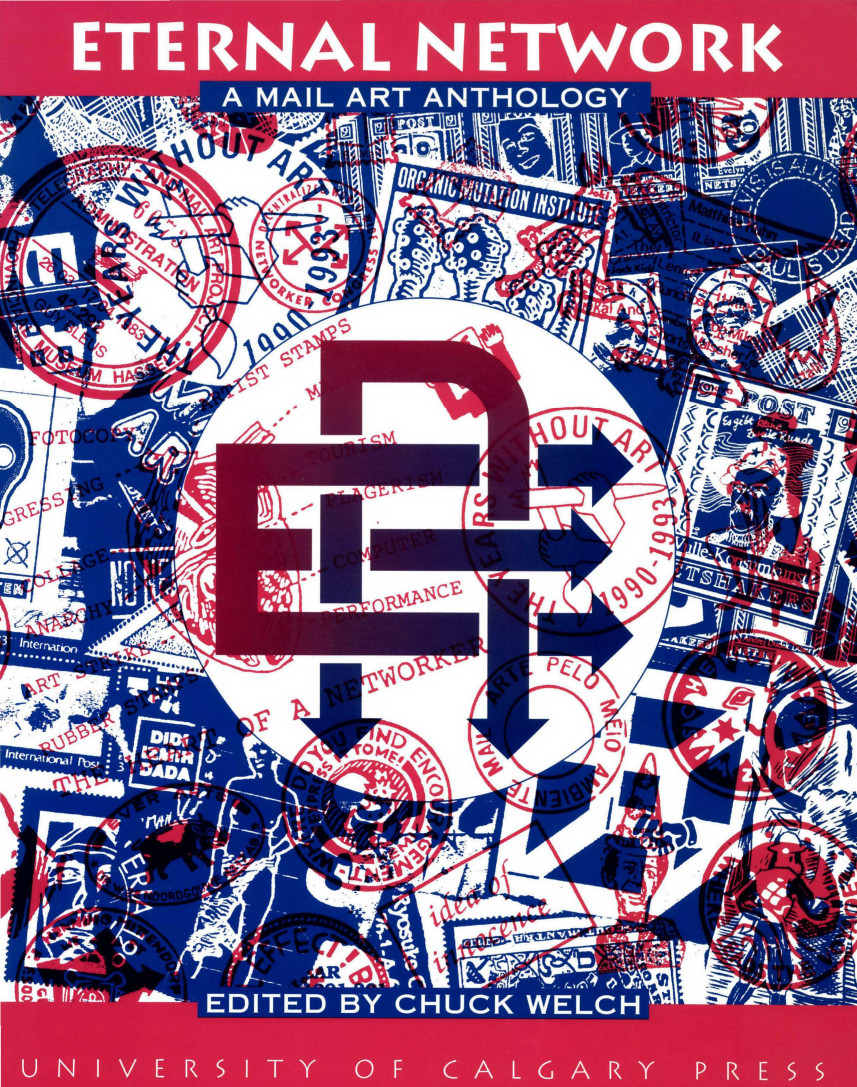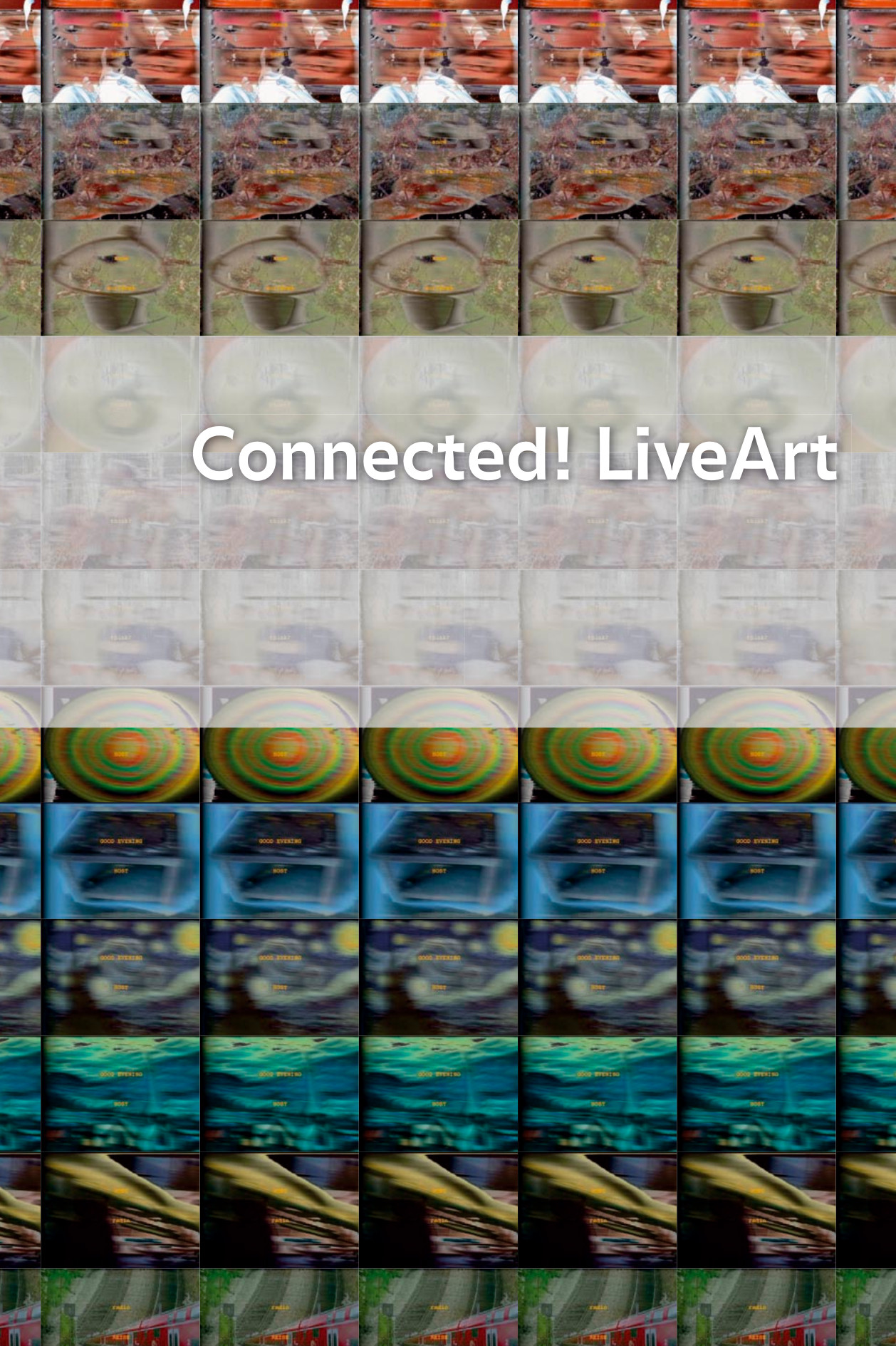Chuck Welch (ed.): Eternal Network: A Mail Art Anthology (1995)
Filed under book | Tags: · art, art history, artists book, computer art, dada, fluxus, internet, mail art, network art, networks, visual poetry, zine culture

“This book is the first university press publication in academia to explore the historical roots, aesthetics and new directions in mail art. The essays of Eternal Network were written and assembled during the early 1990s by mail artist, writer, and curator, Chuck Welch. The edition contains forty illustrated chapters surveying an international community whose mailboxes and computers were a proto internet bridging the analog and digital world of art and communication. Eternal Network includes numerous photographs of mailed artifacts, performance events, congresses, stampsheets, posters, collages, artists’ books, visual poetry, computer art, mail art projects, zines, copy art and rubber-stamped images.
The book is divided into six parts: Networking Origins, Open Aesthetics, New Directions, Interconnection of Worlds, Communication Issues and Ethereal Realms. Appendixes include mailing addresses from the 1990s, mail art exhibitions, a listing and location of over 350 underground mail art magazines and a comprehensive record of public and private international mail art archives. The late Judith Hoffberg, founder of Art Libraries Society of North America (ARLIS) and editor of Umbrella Magazine, wrote an astute and prophetic review of Eternal Network in March 1995. “Some might think that this is the last gasp of a paper-orientated group of artists, but it is more a testament to the future of alternative art and the role of artists as networker”.”
With a Foreword by Ken Friedman
Publisher University of Calgary Press, Calgary, 1995
ISBN 1895176271, 9781895176278
xxiii+304 pages
via Chuck Welch, (2)
PDF (147 MB)
Comments (2)Sher Doruff: The Translocal Event and the Polyrhythmic Diagram (2006)
Filed under thesis | Tags: · aesthetics, art, collaboration, composition, digital art, emergence, media art, network art, performance, software, translocal performance
This thesis identifies and analyses the key creative protocols in translocal performance practice, and ends with suggestions for new forms of transversal live and mediated performance practice, informed by theory. It argues that ontologies of emergence in dynamic systems nourish contemporary practice in the digital arts. Feedback in self-organised, recursive systems and organisms elicit change, and change transforms. The arguments trace concepts from chaos and complexity theory to virtual multiplicity, relationality, intuition and individuation (in the work of Bergson, Deleuze, Guattari, Simondon, Massumi, and other process theorists). It then examines the intersection of methodologies in philosophy, science and art and the radical contingencies implicit in the technicity of real-time, collaborative composition. Simultaneous forces or tendencies such as perception/memory, content/expression and instinct/intellect produce composites (experience, meaning, and intuition- respectively) that affect the sensation of interplay. The translocal event is itself a diagram – an interstice between the forces of the local and the global, between the tendencies of the individual and the collective. The translocal is a point of reference for exploring the distribution of affect, parameters of control and emergent aesthetics. Translocal interplay, enabled by digital technologies and network protocols, is ontogenetic and autopoietic; diagrammatic and synaesthetic; intuitive and transductive. KeyWorx is a software application developed for real-time, distributed, multimodal media processing. As a technological tool created by artists, KeyWorx supports this intuitive type of creative experience: a real-time, translocal “jamming” that transduces the lived experience of a “biogram,” a synaesthetic hinge-dimension. The emerging aesthetics are processual – intuitive, diagrammatic and transversal.
Doctor of Philosophy, SMARTlab Programme in Performative New Media Arts, Central Saint Martins College of Art & Design, University of the Arts, London
288 pages
PDF
PDF (Appendix “The KeyWorx Interviews: Transcripts of Interviews and Conversations with KeyWorx Artists”)
Sher Doruff, Nancy Mauro-Flude (eds.): Connected: LiveArt (2005)
Filed under catalogue | Tags: · art, collaboration, installation art, media art, network art, networks, radio art, sound art, streaming, telepresence

“The Connected! Programme spanned a two year period from January 2003 to January 2005. It officially concluded with a celebratory Birthday party for Art in the Theatrum Anatomicum of Waag Society, the local ‘home’-base of many Connected! projects. Although most of the people present at that event agreed with Federico Bonelli’s assessment “that art could have committed suicide in 1984″ – the research and the show goes on.
The Connected! Programme had four nested components: Projects, Artists-in-Residence, Sentient Creatures Lecture Series and Anatomic. This book documents many of the activities in these domains; the lectures, the events, the workshops, the performances, the installations, the discourse. Yet, it’s interesting to note that pulling together material for this publication was a bit like trying to capture the wind. Much of the work produced in this two-year period emphasized the real-time process of the making. Documentation of that often fragile, unstable and always already ephemeral process is sketchy at best and marginal to the actualization of the event itself. For many of these artists, documentation is a secondary concern, an afterthought. For others, documenting is an integral process indistinguishable from the event itself.
There are myriad photos in this catalogue of artists behind their laptops. Myriad photos that say little about the levels and layers of codified communication emitted from those unseen screens. These casual, unpretentious shots are images of social networks in progress – the translocal – a feedback loop of the local effecting the global affecting the local affecting the global. Not only does the artwork produced, or better transduced, scramble representational meaning but so too does the process of making. Performance practice that addresses the indeterminate dance-on-the-edge-of-chaos in compositional processes is a felt thing, an experience that doesn’t always translate well in laptop snapshots.”
Co-writers: Federico Bonelli, Beth Coleman, Josephine Dorado, Lucas Evers, Wander Eikelboom, Howard Goldkrand, Jan-Kees van Kampen, Arjen Keesmaat, Jeff Mann, Mark Meadows, Hellen Sky, Michelle Teran, Ananya Vajpeyi
Publisher Waag Society, Amsterdam, September 2005
Creative Commons BY-SA 2.0 Netherlands License
160 pages
PDF (updated on 2012-9-3)
Comment (0)
